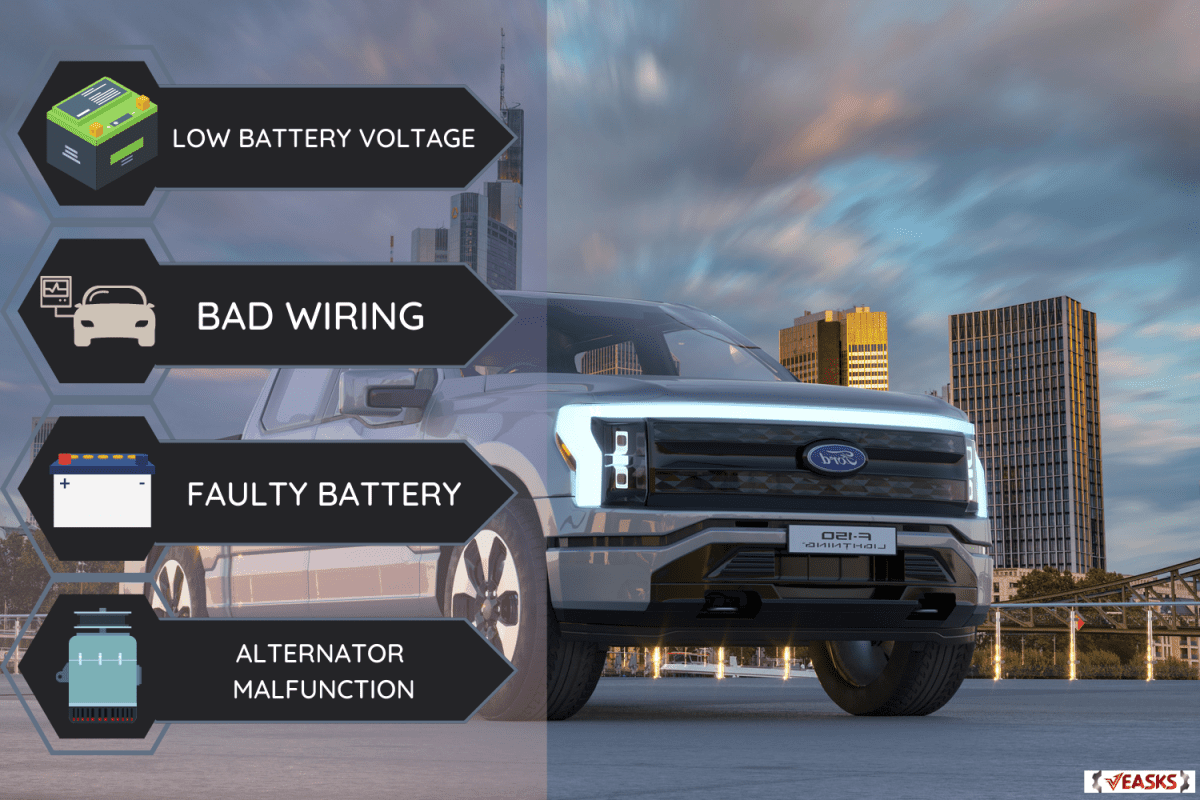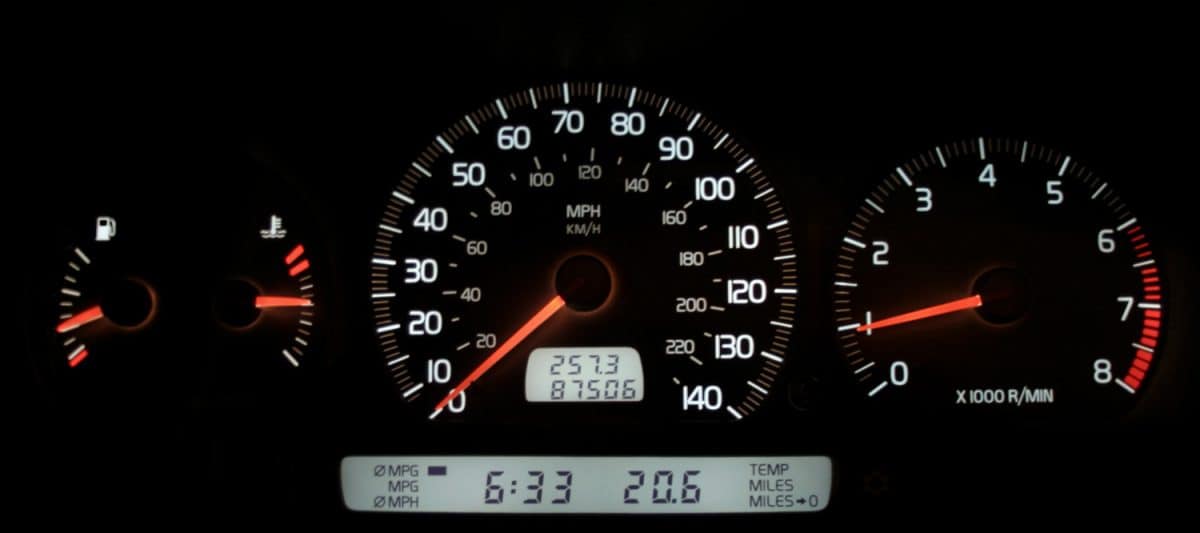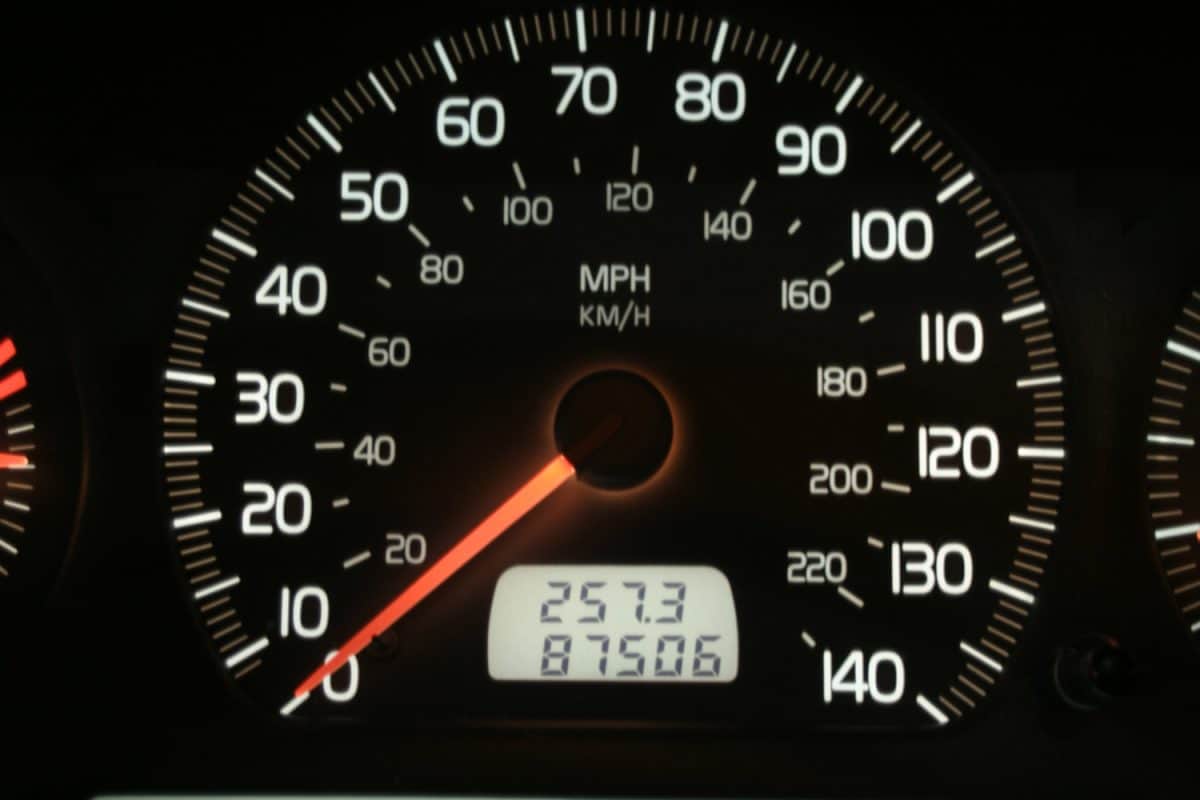Driving your Ford F-150 becomes an unsafe experience if the gauges in its instrument cluster are going crazy. Now you're wondering why these indicators are malfunctioning. We researched and asked industry experts about this concern, and here's what we found.
The instrument cluster on a Ford F-150 might go crazy or behave erratically because the pickup truck encountered a problem. Some of the possible culprits of this issue are:
- Low battery voltage
- Bad wiring
- Faulty battery
- Alternator malfunction
It’s ideal to learn as much as you can about the potential suspects to your Ford F-150’s instrument gauges going crazy. That way, you can apply the appropriate solution, and reduce the time and effort in attempting to solve this dilemma. So continue reading as we tackle these underlying causes in greater detail.
Why Are The Gauges On My Ford F-150 Fluttering?

Oftentimes, the Ford F-150’s gauges may flutter or go crazy because of battery issues. But it can also come from an alternator concern. So keep reading as this section aims to help you find the source of this problem.
Low Battery Charge
An automotive battery with a low charge can encounter a host of issues, including the gauges going crazy.
Take note that battery charge is different from its remaining energy. If its energy is low or empty, the vehicle, particularly your Ford F-150, won’t start regardless of the DIY technique you use on it. In other words, a car battery with an empty capacity typically needs immediate replacement.
On the other hand, the battery charge or voltage is the electrical capacity it holds. A reduction in charge can negatively affect the vehicle’s performance, including a failure to stabilize the readings on the gauges.
Apart from the erratic performance on the F-150’s gauges, attempting to run the vehicle with a low battery charge can introduce other problems like:
- Shorten the alternator’s lifespan
- Reduced vehicle performance
- Fuel injectors may encounter difficulty in delivering fuel
- Introduces additional strain to the truck’s various electrical and mechanical systems
Bad Wiring
The wiring connected to your Ford F-150’s battery and/or instrument cluster might have loose or frayed connections, resulting in the gauges’ inconsistent behavior. It might be because of a rodent that chewed on the wire or the results of frequent off-road driving.
Faulty Battery
Installing a poor-quality battery to your Ford F-150 may introduce unpredictable movements to its gauges. So make sure that you're placing a good- or excellent-quality battery on the pickup truck.
One factor to think about before you finalize the purchase for your F-150’s battery is the cold cranking amps (CCA) and reserve capacity (RC) ratings. CCA denotes the battery’s capacity to start while under cold or freezing temperatures. As for RC, it pertains to the battery’s ability to retain its charge without a jumpstart.
Check the product’s description or read the battery’s label to check these details. Then, avoid poor CCA and RC ratings as you shop for a new battery.
Alternator Malfunction
An alternator functions by maintaining optimal engine functions as the vehicle runs. It’s also responsible for transforming the acquired mechanical energy into electrical energy. But an alternator malfunction may cause different concerns, including your F-150's gauges having an unstable performance.
Aside from a pickup truck's instrument cluster going crazy, other signs of a faulty alternator are:
- Dim, flickering, or excessively bright lights
- Fast battery discharge
- Poor vehicle performance
- Vehicle stalls regularly
How Do I Fix My Crazy Ford F-150 Gauges?

If your Ford F-150's engine ignites and its gauges go crazy, it might be best not to drive the vehicle. Keep in mind that the incorrect readings presented on the instrument cluster may increase the risks of on-road accidents and injuries.
Also, you might be at a higher risk than usual of encountering violations. For example, the erratic movements on the truck's speedometer might make you believe you're driving at 55 mph when you're running the vehicle at 71 mph.
So, ensure that your F-150 is in a safe spot to troubleshoot the cause of the gauge’s unreliable behavior. Once you find the problem’s main culprit, move forward by using the appropriate method based on your findings.
Continue reading this section to learn possible solutions that may help restore your Ford F-150’s normal functions.
Replace The Battery
First, ensure that the battery you purchased (or are about to buy) is compatible with your Ford F-150. Don't install a car battery to a vehicle that doesn't fit the requirements and qualifications. If you do, you might run into additional problems.
Once you bought the correct battery for your F-150, continue this process by following these steps:
What You’ll Need
- Socket wrench
- Replacement battery
Step-by-Step Guide
- Turn off the pickup truck’s engine.
- Allow the engine to cool, then open the hood.
- Disconnect the negative wire from the battery’s negative terminal.
- Disconnect the positive wire from the positive terminal.
- Unscrew the bolts holding the old battery to the bracket.
- Take out the old battery and install the new unit.
- Connect the positive wire to the positive terminal of the new battery.
- Connect the negative wire to the negative terminal.
- Turn on the vehicle’s engine to check if the gauges are still going crazy.
Check out this replacement automotive battery on Amazon.
You can also watch this video if you need a visual guide for this procedure:
Jumpstart The Battery
You’ll need another vehicle with a battery with a relatively good charge for this process to work. Next, continue this procedure by going through these steps:
What You’ll Need
- Car jumpstart kit
Step-by-Step Guide
- Open the Ford F-150’s hood.
- Connect the positive cable of the jumpstart kit to the battery’s positive terminal.
- Connect the negative cable of the jumpstart kit to the battery’s negative terminal.
- Attach the other ends of the jumpstart kit’s cables to the vehicle with the charged battery.
- Start the engine of the vehicle with the charged battery.
- Ignite the engine of the Ford F-150 with the low-charged battery.
- Allow the engine on the F-150 to run for at least 30 minutes before using the pickup truck.
- After that period, check the gauges in the instrument cluster if they’re still acting up.
Check out this portable car jumpstart kit on Amazon.
Warning: Never cross the wires of your vehicle’s battery. Doing so may cause irreparable harm to the battery and even the vehicle.
Also, the following video will show you a visual representation of the steps mentioned above:
How Much Does It Cost To Replace The Instrument Cluster On My Ford F-150?

Expect to pay around $200 to $400 for the replacement assembly. But you might need to spend extra cash if you want to take advantage of professional services for the installation. Otherwise, it’s possible to save money from the overall expenses if you complete the replacement job using DIY techniques.
Check out this replacement instrument cluster panel on Amazon.
Final Words

Remember, park your Ford F-150 in a safe spot and troubleshoot the cause of the gauges going crazy. Also, avoid driving the pickup truck while the problem persists to avoid risks of accidents, injuries, and expensive fines from violations. If you can’t find the source of the issue, don’t forget that you can rely on skilled automotive technicians to help you with this dilemma.
Also, check out these other great reads if you’re looking for solutions to other truck concerns:






